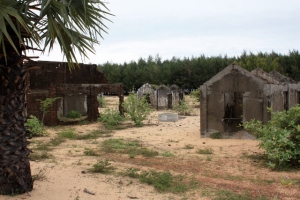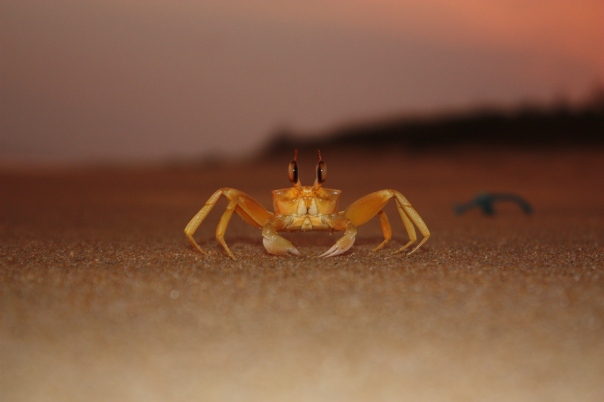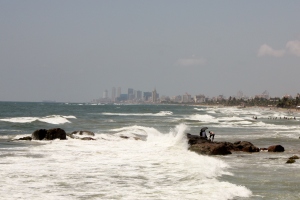Our visiting guest blogger, James Willsher, reflects on a memorable journey through Sri Lanka.
Palm trees: everywhere. Out of the airport’s beige interiors, met by the Tsarina, into a waiting taxi. Now that’s what I call weather: valleys of sun-stained cloud roof Colombo’s gleaming broil. Banks, tuk-tuks, billboards, banks, shaded grocers and elephantine fruit, peeling Victorian megaliths, banks. Massive construction works: a China-financed motorway.

Arrive at the residence, for a resplendent cup of tea. Exactly an hour’s sleep on an overnight flight from Heathrow. Lord K returns from the office, and then a blast around central Colombo in The Beast. The driving intense, but the traffic forgiving: you elbow through with everyone else, fist-waving and language curiously absent. Towering trees veil grand villas, then McDonald’s, Mango, skyscrapers, metal-and-glass.
To a charming Korean family for dinner, Scotch, and Sri Lanka’s Three Coins lager. A quick slink out to a nearby supermarket for a bottle. Back to the table, a glass, and there it is before me. Arrack: gold malarial; hours drift, oozing to a shudder. It is gorgeously drinkable. I bid you good night.
Next morning a whistle-stop tour of Colombo sights by tuk-tuk, driven commandingly by Dudley. Through rural-tinged suburbs to a grand temple, ancient dusky brown, where Buddha trod. He reclines inside, a shining giant amid infinite and fading illustrations. An enormous blinding white stupa adjacent, devotees march around the requisite banyan tree, brightly coloured strips of material tied to anything available. Then on over a railway line to a huge Hindu temple, comprised almost entirely of little painted statues, some men chip away on a smaller version behind, years of work ahead. Fort, Galle Face Green, lunch. Challenging: press curry and rice into a ball using only one’s right hand. I’m left handed, a slow process, and much ends up on the face.
A brief stroll to Vihara Mahadevi Park. Schoolchildren chatter, fruit bats repose in multitude, occasionally shriek or take a flutter unfurling that notorious wingspan. Saatchi & Saatchi beside a roundabout, a turn down a street of colonial residences, now offices. International PR titan Ogilvy announces itself on a plate outside one, the Iraqi embassy another. An iced tea and back home.
Up early next day, through mild traffic in The Beast and onto the newly-opened Southern Expressway, verdure either side. A turn-off to country main roads, where single-decker buses are overlords of the right of way. Demented minibuses and cranking lorries slow the progress, as do tuk-tuks – collective noun: an inconvenience – to the hill country. Roadside stall, king coconut hacked open, straw inserted: thambili, an immensely refreshing juice, a celebrity health fad waiting to happen.
The heat chills, the roads precipitous, tea plantations emerge, and the small hillside town of Haputale. The White Monkey Dias Rest House, little cottages with a million-dollar view. Dias is a splendid gentleman, very welcoming, with whom Lord K and the Tsarina have stayed previously. A half-hour walk into town, which quietly bustles with commerce. A Sri Lankan Lion lager in a bar, where I put the jumper back on for the first time since the aeroplane; a very English train station; and in a bakery some invigorating sweet spiced tea and a pastry containing hard-boiled egg. Tuk-tuk back to the rest house for dinner, thank heavens for cutlery, and an arrack sat in front of that view. We are at the same height as the weather.

Next morning a visit to a country mansion built by a plantation owner in 1931. With the cold, the light rain, raked leaves and picturesque gardens, it could be a National Trust jaunt on a grim Sunday in November. Back down into the heat, heading south. A three-foot monitor lizard struts between speeding cars, minus half its tail. A deleted scene from Jurassic Park 4. Detour to Kataragama, sacred town for Buddhists, Hindus and Muslims. The approach is a country lane, then a dirt track, then crawling along miles of unfinished highway. The potholes. Is your exhaust pipe, ahem, well hung, sir? The heat. We press on. Finally a main road, and Kataragama. The sites of worship in a park, thousands throng, monkeys conspire and from pilgrims pilfer fruit intended as offerings, leaving overflowing rubbish bins to roaming cows and goats. A turn around the stupa reveals elephants chained beside a car park. Marauding monkeys with the same faces as sour old men in East End boozers.
Back on the road, and in the absence of a radio station I instigate a truly appalling barbershop trio treatment of Frankly Mr Shankly. Which is swiftly matched by, er, Boom Boom Boom and Here Comes the Hotstepper. An evening of louche behaviour on the beach beckons.

















